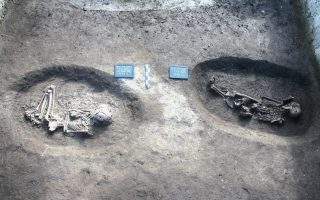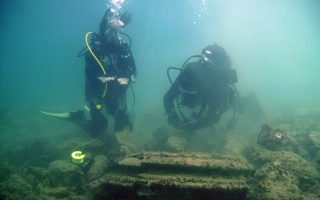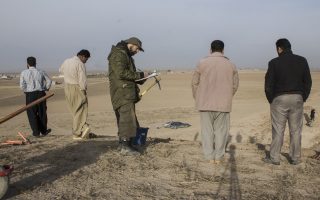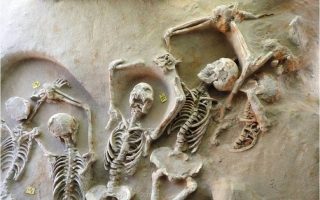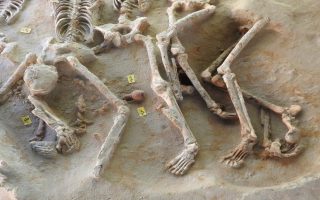Antikythera seabed the subject of another underwater search
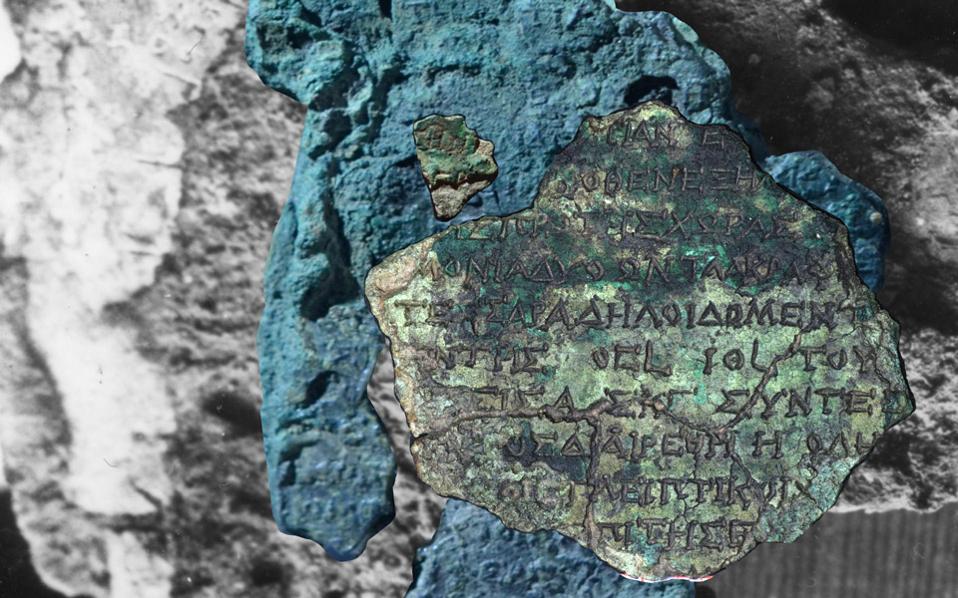
It was just before Easter in 1900 when two boats belonging to sponge divers from Symi took refuge near Antikythera after being caught out by a storm at sea. Once the weather cleared, one sponge diver, Ilias Stadiatis, dove in to explore the seabed. At a depth of 40 meters, he saw an unforgettable sight: the floor was strewn with marble statues, pottery and remnants of an ancient ship.
He grabbed the hand of a bronze statue and resurfaced. Without knowing it, this sponge diver had contributed to the birth of a new science in the Aegean Sea, that of underwater archaeology.
Between 1900 and 1903, a handful of daredevil sponge divers (one of whom died and two ended up disabled), with the assistance of the Navy, recovered valuable items from the seabed around Antikythera that weighed tens of tons. Among them was the famous Antikythera Mechanism, the oldest object with metal gears ever found in the world and a testimony to the highly advanced technological and scientific achievements of the ancient Greeks.
New findings
In late May 2016, 116 years later, members of a diving mission composed of Greek and foreign archaeologists, under the supervision and the co-organization of the Ephorate of Underwater Antiquities (EEA), pulled a bronze spear and a ceramic dish from the same spot. The spear weighs more than six kilos and is two meters long. As yet, it’s not known if it is part of a sculpture or whether it belonged to a member of the ancient ship’s crew. They are the first important findings of this year’s survey which will continue into June.
The most important tool that the archaeologists have at their disposal this year is a highly sensitive metal detector. It’s expected to be particularly useful since in 2013 and 2014, members of the same team mapped the wreckage site in full and identified areas which they wanted to take a closer look at.
One finding from the previous years is an enormous anchor which gives some indication of the size of the ship and is expected to provide answers to many questions. The objects are numerous and spread across a large area of the seabed, leading experts to believe that the area is home to two shipwrecks and not one.
Unanswered questions also concern the Antikythera Mechanism, from which a part is missing. It seems crazy to believe that the divers might be able to find a metal piece a few centimeters in size in the vastness of the seabed. However, the fact that by 2017 the Hublot company will have a special diving robot ready gives new reason to be hopeful.
The American Woods Hole Oceanographic Institute (WHOI) is also one of the partners of the Ephorate of Underwater Antiquities in this endeavor. The coordinators of the excavation are Theotokis Theodoulos and Dimitris Kourkoumelis (EEA) and Brendan Foley (WHOI). The Aikaterini Laskaridis Foundation the watchmaker Hublot, OTE Group and Costa Navarino are among some of the most prominent supporters of the search.
Decoding the mechanism
On Thursday, June 9, at 7.30 pm during a special event at the Historical Library of the Aikaterini Laskaridis Foundation, the opportunity will be given for the first time for visitors to discover what exactly the inscriptions on the mechanism say. The theory is that they are a kind of user’s manual for how the mechanism works and the astrological connections it has.
Since 1902, the first inscriptions interpreted hinted at the astronomical use of the mechanism. Among the first words to be deciphered were “Venus” and “sun ray.” By the time the discovery was made public for the first time a few months later, approximately 600 characters had been deciphered. This number rose to about 923 characters by the 1970s and then to 2,160. The latest analysis of the precious mechanism puts the inscriptions at 3,400 characters.
But the most important feature is the quality of what can be read. There are now full sentences and many new figures, which help in decoding the mechanism’s functions. Thus, the international community, followed by the Greeks who get s first look, will have the opportunity to learn about the most original and hitherto completely unknown system for forecasting eclipses, an entire planetarium showing the movements of the heavenly bodies, but also a calendar which might provide new information on the place of manufacture and use of this unique machine.
The completeness of this new reading now shows precisely which parts of the mechanism have not yet been found: “After reading the inscriptions, the divers know exactly what to look for in the sea. We know what is missing in relation to what we already have in our hands.” said one of the speakers of the event, Efthymios Nikolaidis, historian of science, research director at the National Research Foundation, and editor of the international journal Almagest, in which the inscriptions will be published.
